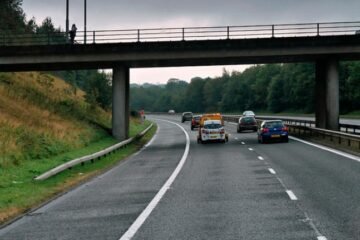The ruling Conservative group in Dumfries and Galloway Council has failed to scrap a major flood protection project for the town of Dumfries, after a close vote by the councillors. The project, known as the Whitesands scheme, has been confirmed by the Scottish Government, which has pledged to fund 80 per cent of the cost. However, the Tories argued that the scheme was too expensive, unnecessary and unpopular.
Why is the Whitesands scheme important?
The Whitesands is one of the most frequently flooded urban areas in Scotland, with 205 incidents recorded since 1827. The worst flooding occurred on December 30 last year, when the River Nith burst its banks and submerged parts of the town centre. The flood caused significant damage to properties, businesses and infrastructure, and disrupted transport and services.
The Whitesands scheme aims to protect the town from future floods by raising the river walls, creating a riverside walkway and improving the public realm. The scheme is expected to cost £37 million, of which £29.6 million would be funded by the Scottish Government. The scheme also has planning permission and legal approval from the Scottish Ministers.
How did the Tories try to stop the scheme?
The Conservative group, which has 16 out of 43 seats in the council, proposed a motion to withdraw from the scheme and explore alternative options. They claimed that the scheme was not supported by the majority of the residents and businesses in Dumfries, and that it would ruin the historic character and attractiveness of the town. They also questioned the availability and reliability of the Scottish Government funding, citing a report by Audit Scotland that warned of a shortfall in capital spending.
The Tory motion was seconded by two independent councillors, Graham Nicol and Jim Dempster, who also opposed the scheme. They argued that the scheme was based on outdated data and assumptions, and that it would not provide adequate protection from extreme floods. They also suggested that other measures, such as dredging the river or building upstream reservoirs, could be more effective and cheaper.
How did the Labour group save the scheme?
The Labour group, which has 11 seats in the council, put forward an amendment to proceed with the scheme and secure the Scottish Government funding. They were supported by nine SNP councillors, one independent councillor and one Green councillor. The Labour amendment was moved by Linda Dorward, who represents Lochar ward, where the Whitesands is located.

Dorward said that the council had a duty to protect Dumfries from flooding, especially in light of the climate emergency. She said that the Scottish Government had confirmed its commitment to fund 80 per cent of the scheme, and that this was a once-in-a-lifetime opportunity to invest in the town. She said that if the council rejected the scheme, it would lose the funding and leave Dumfries without any flood protection for years to come.
What was the reaction to the vote?
The vote was very close, with 22 councillors voting for the Labour amendment and 21 voting for the Tory motion. The result was greeted with applause by some members of the public who attended the meeting. Some of them were part of a campaign group called Save Our Sands, which supports the scheme and has collected over 3,000 signatures in favour of it.
However, some other members of the public were disappointed by the vote. They were part of another campaign group called Stop The Wall, which opposes the scheme and has collected over 6,000 signatures against it. They said that they felt ignored and betrayed by some of their councillors, and that they would continue to fight against the scheme.
What are the next steps for the scheme?
The council will now have to inform the Scottish Government of its decision to proceed with the scheme and request its funding contribution. The council will also have to allocate £2.4 million from its own capital budget to cover its share of the cost increase. The council will then have to appoint a contractor to carry out the construction work, which is expected to take about two years.
However, there may still be some challenges ahead for the scheme. Some opponents of the scheme have threatened to take legal action against it or stage protests during its implementation. Some supporters of the scheme have also expressed concerns about its design and impact on traffic and parking. The council will have to address these issues and ensure that the scheme delivers its intended benefits for Dumfries.


















